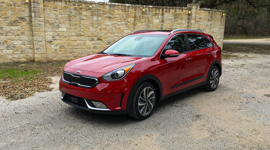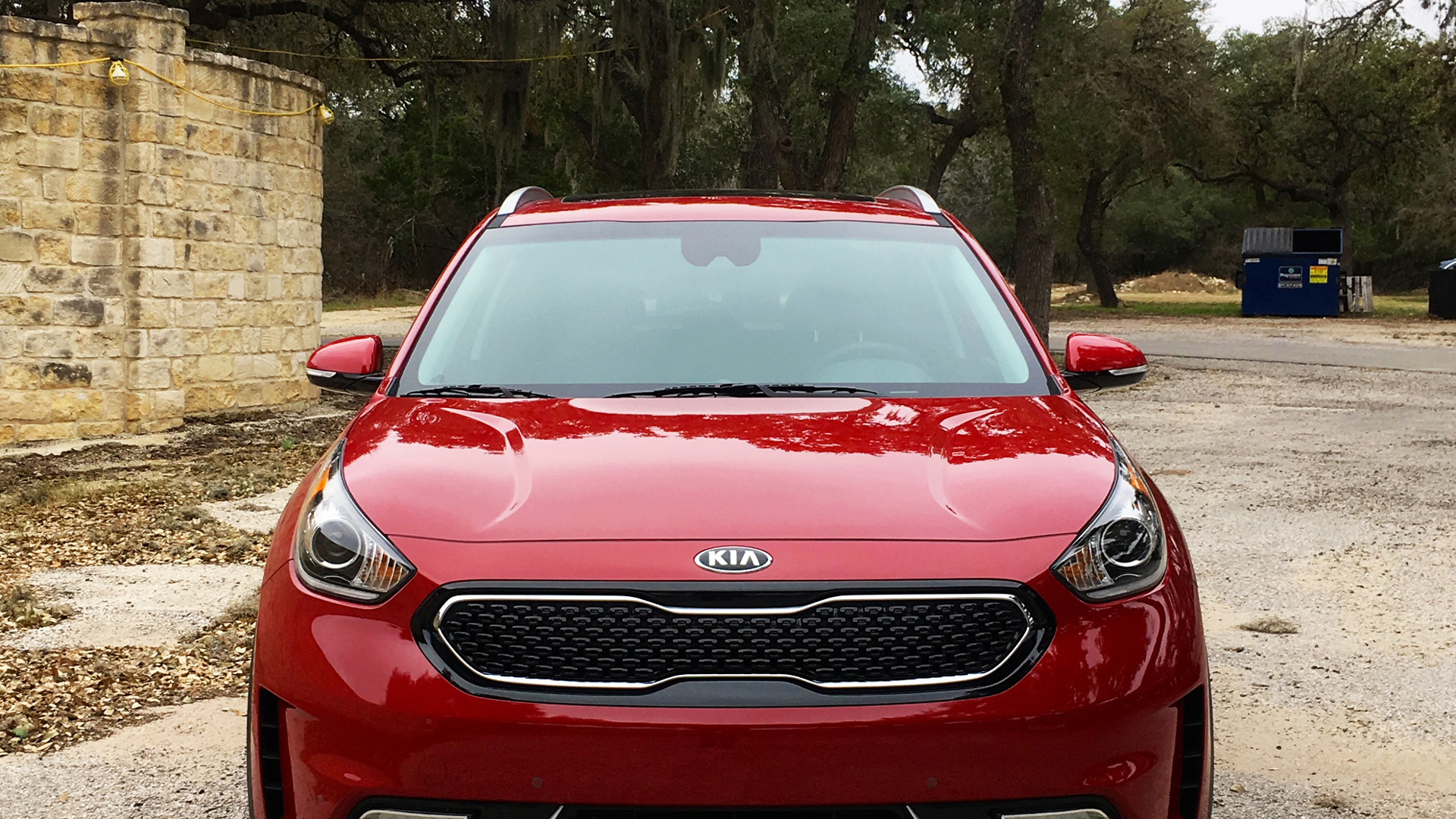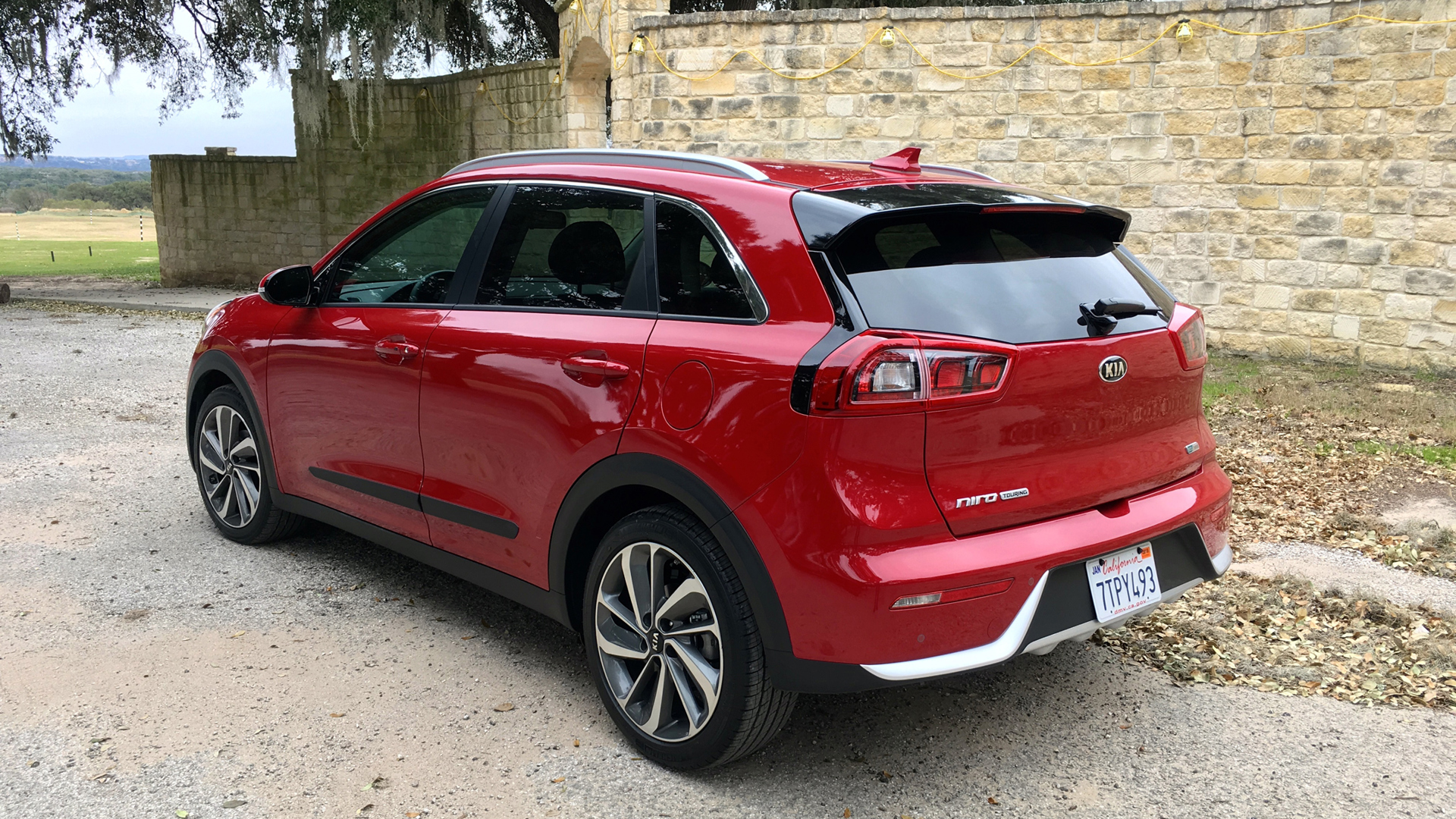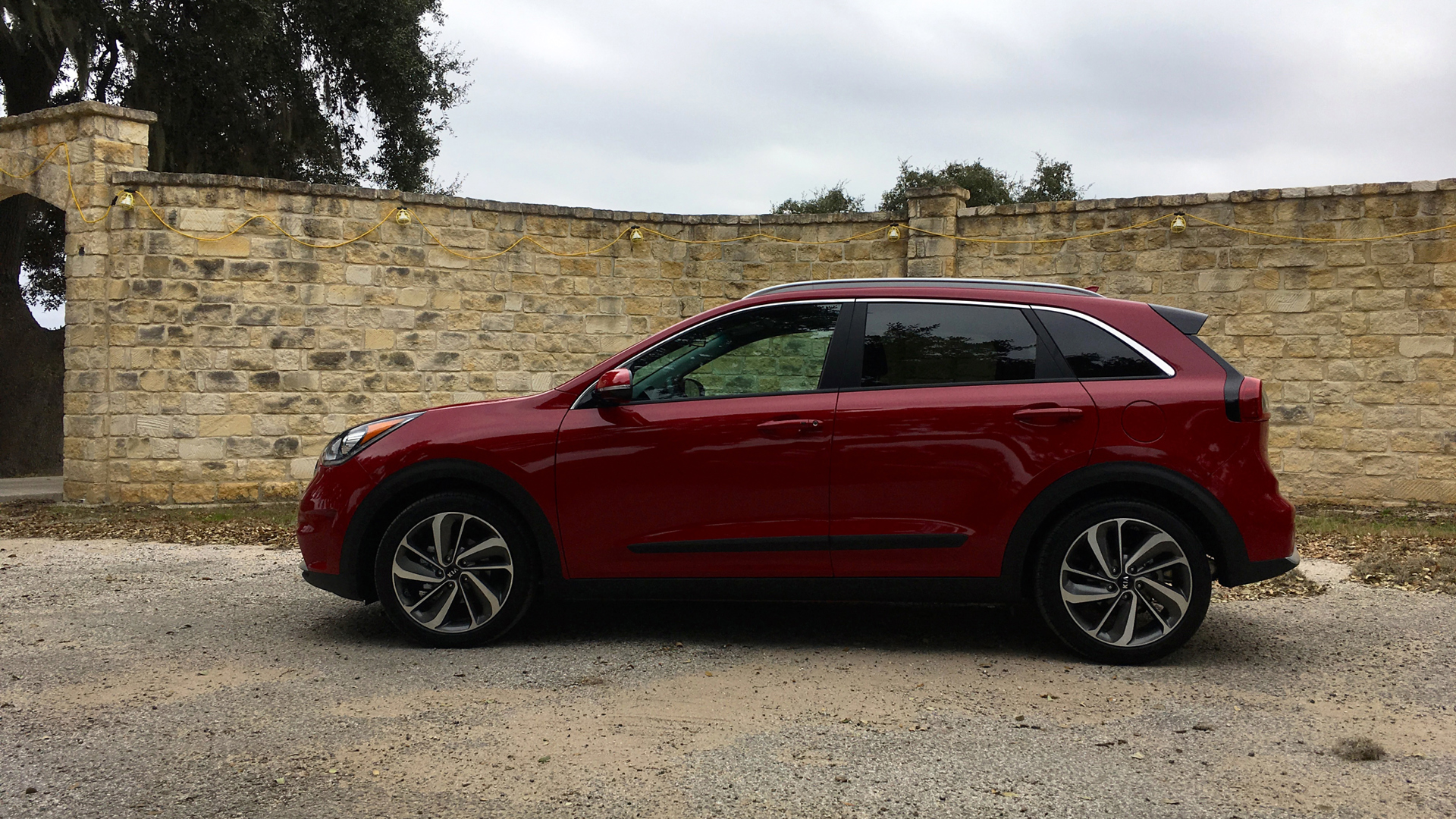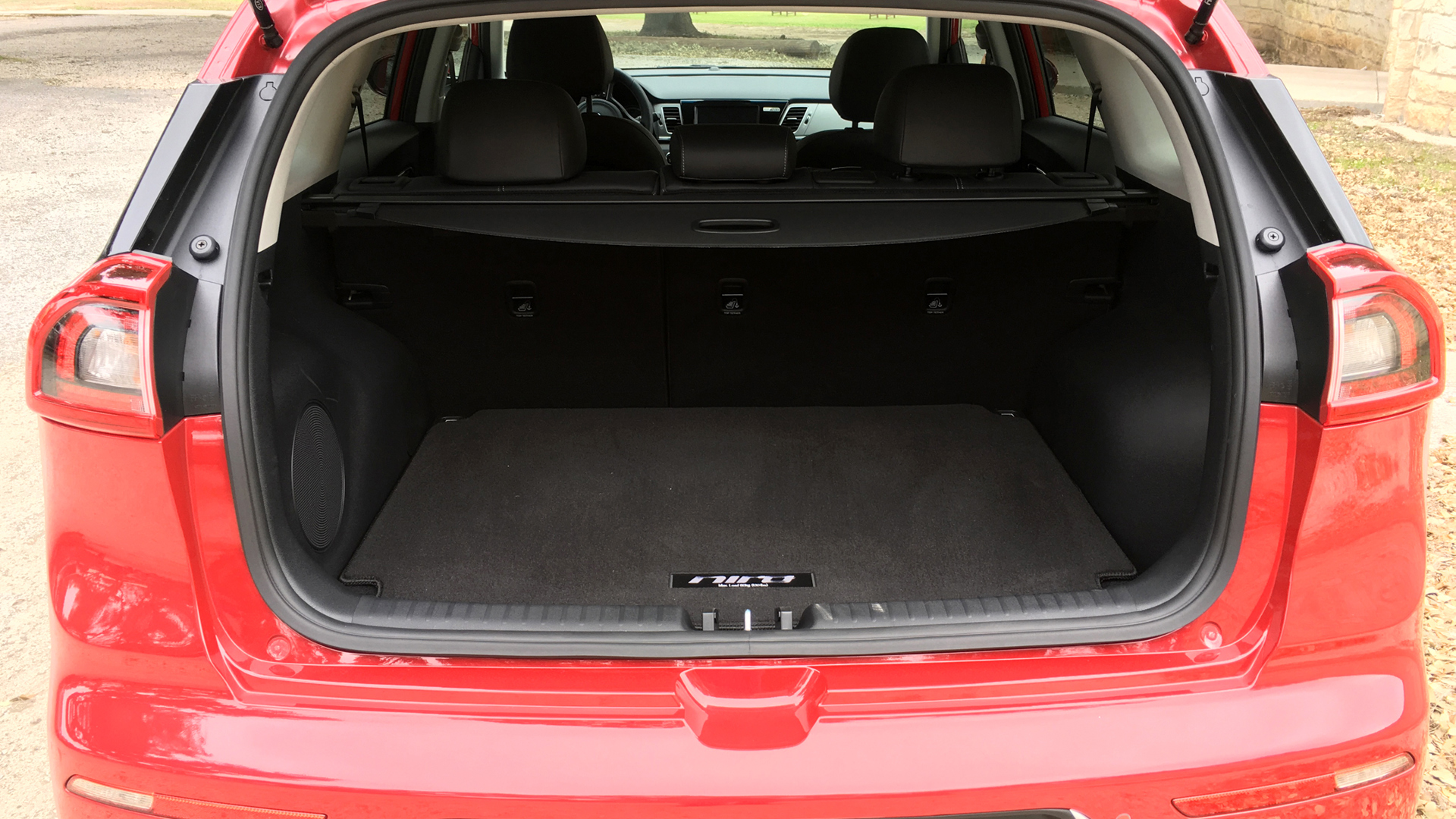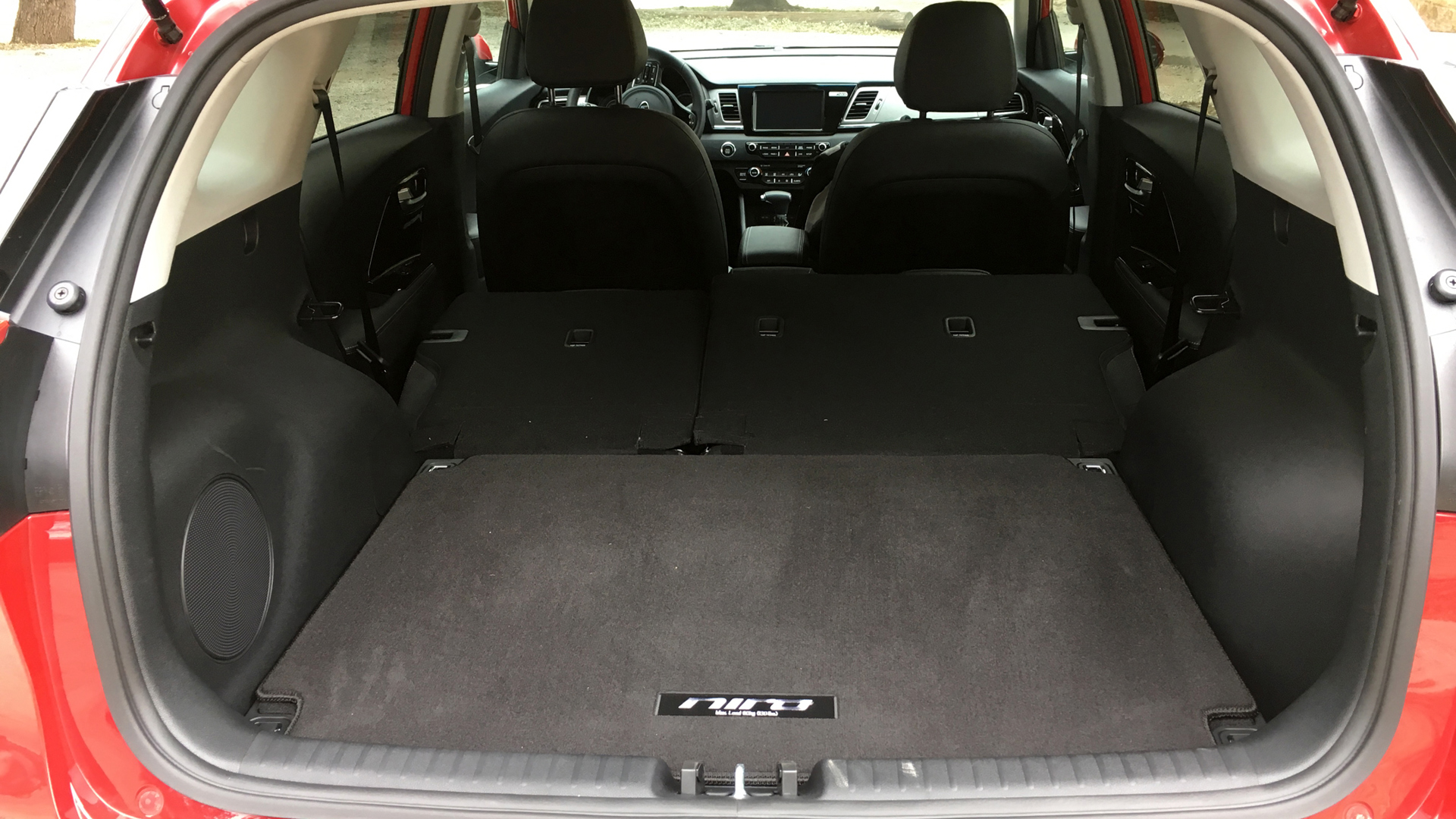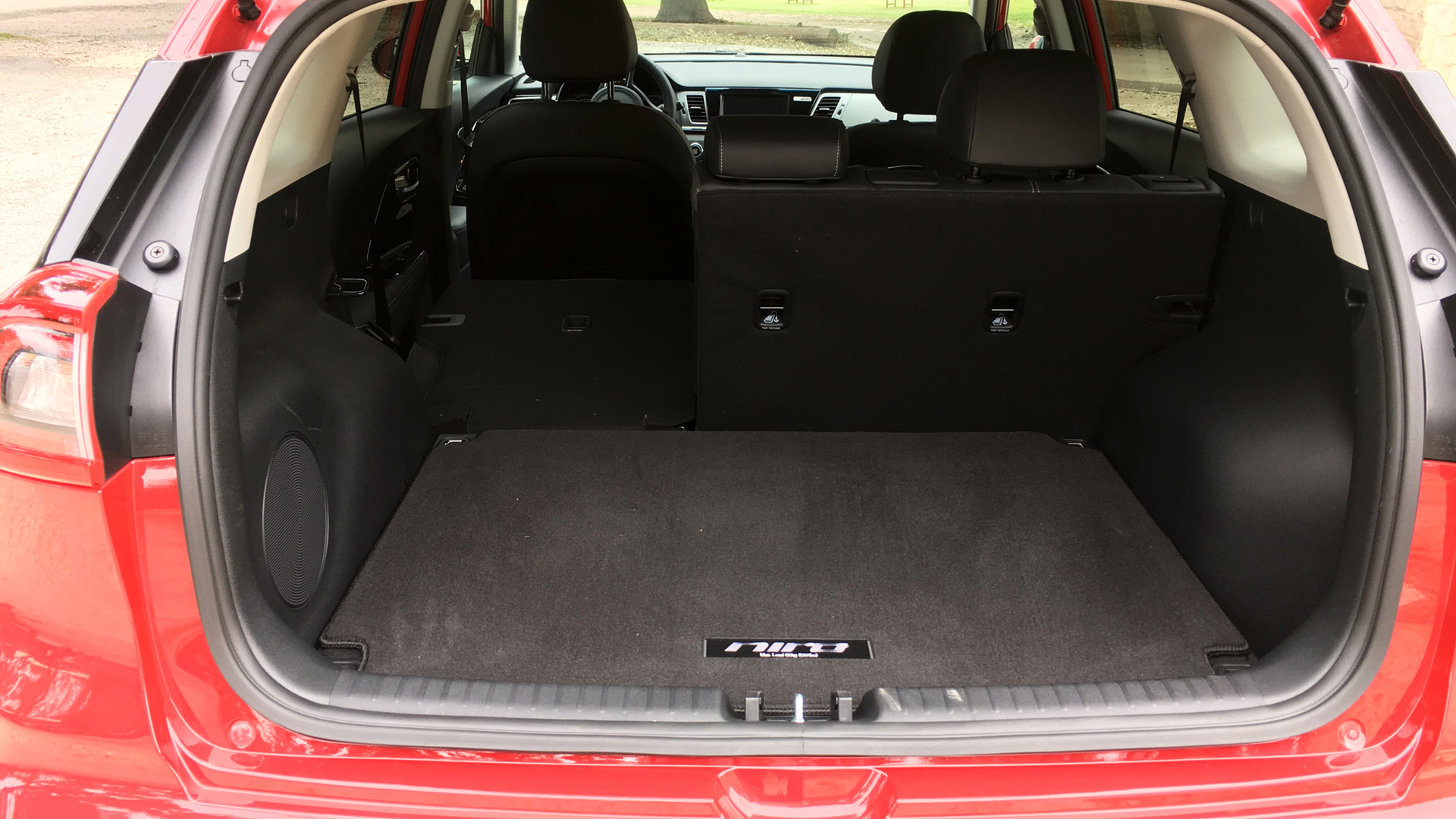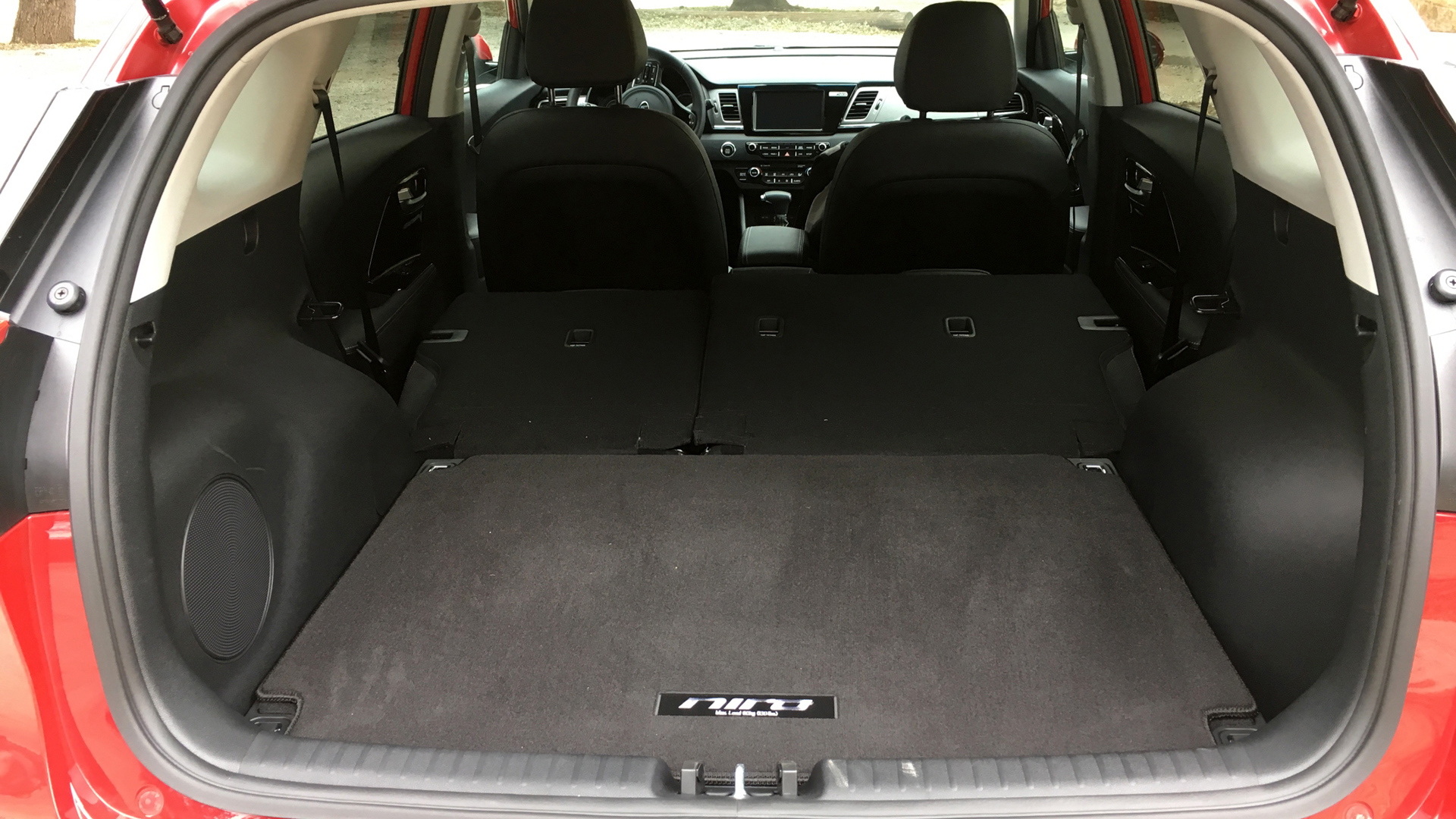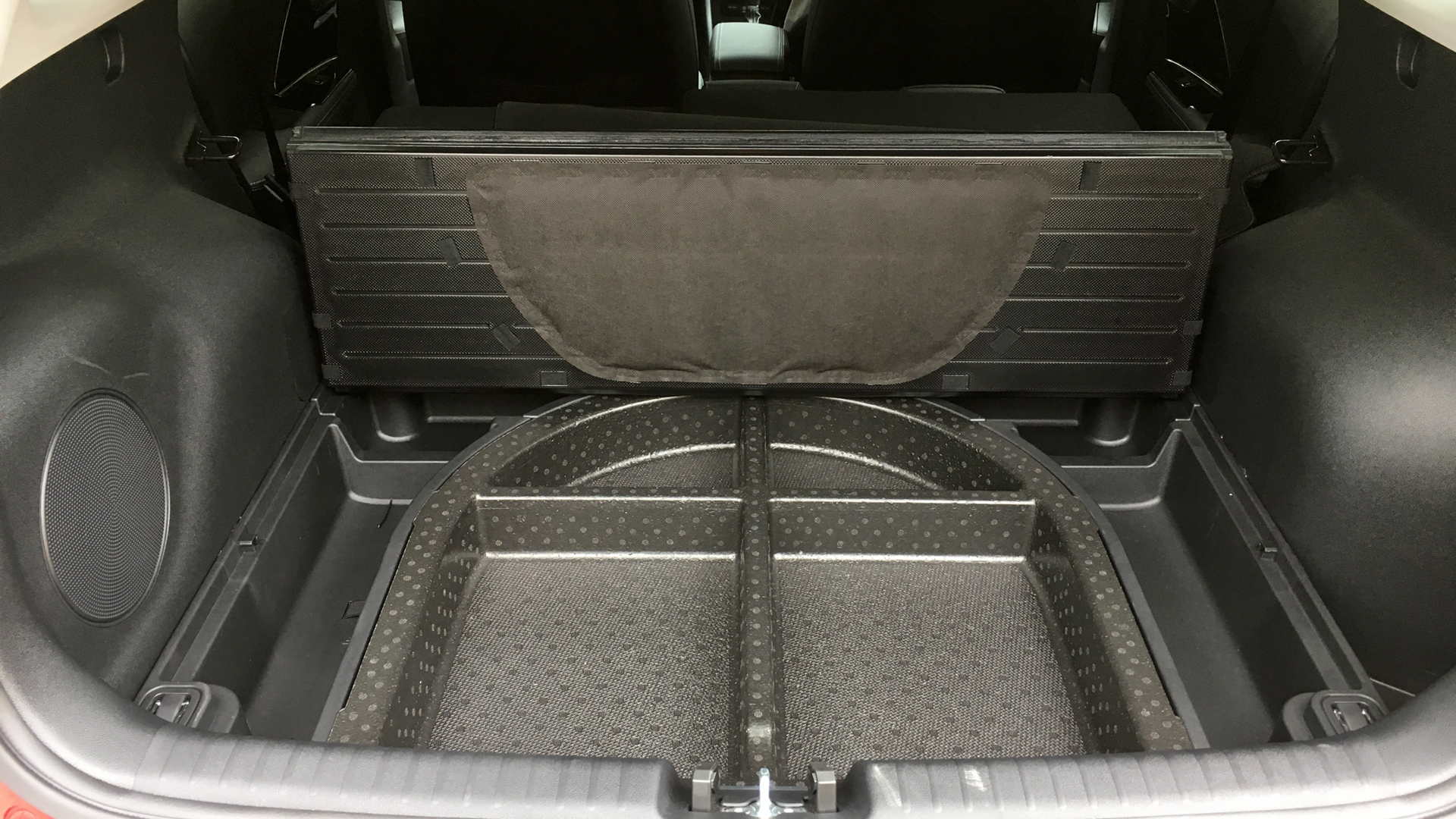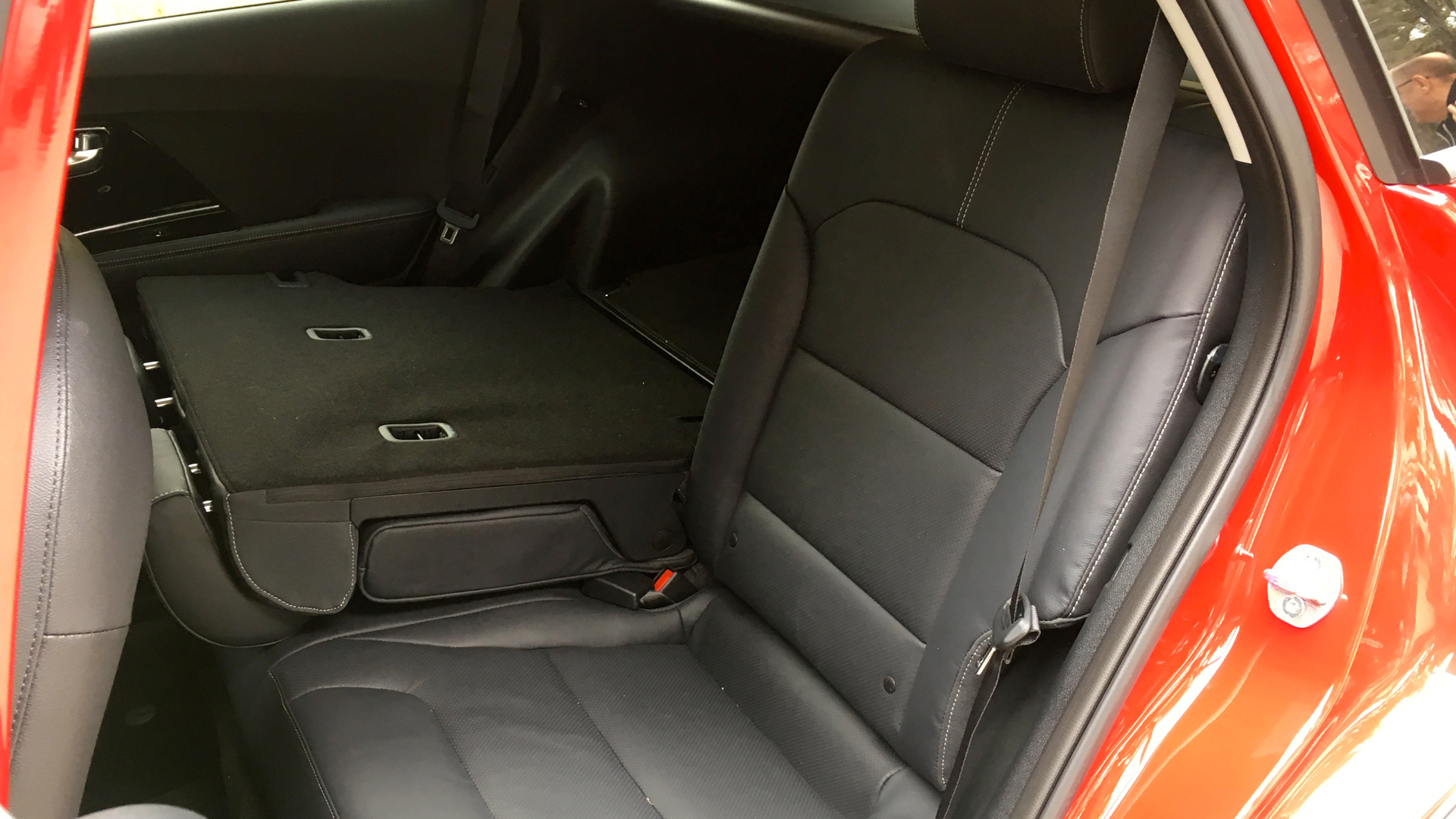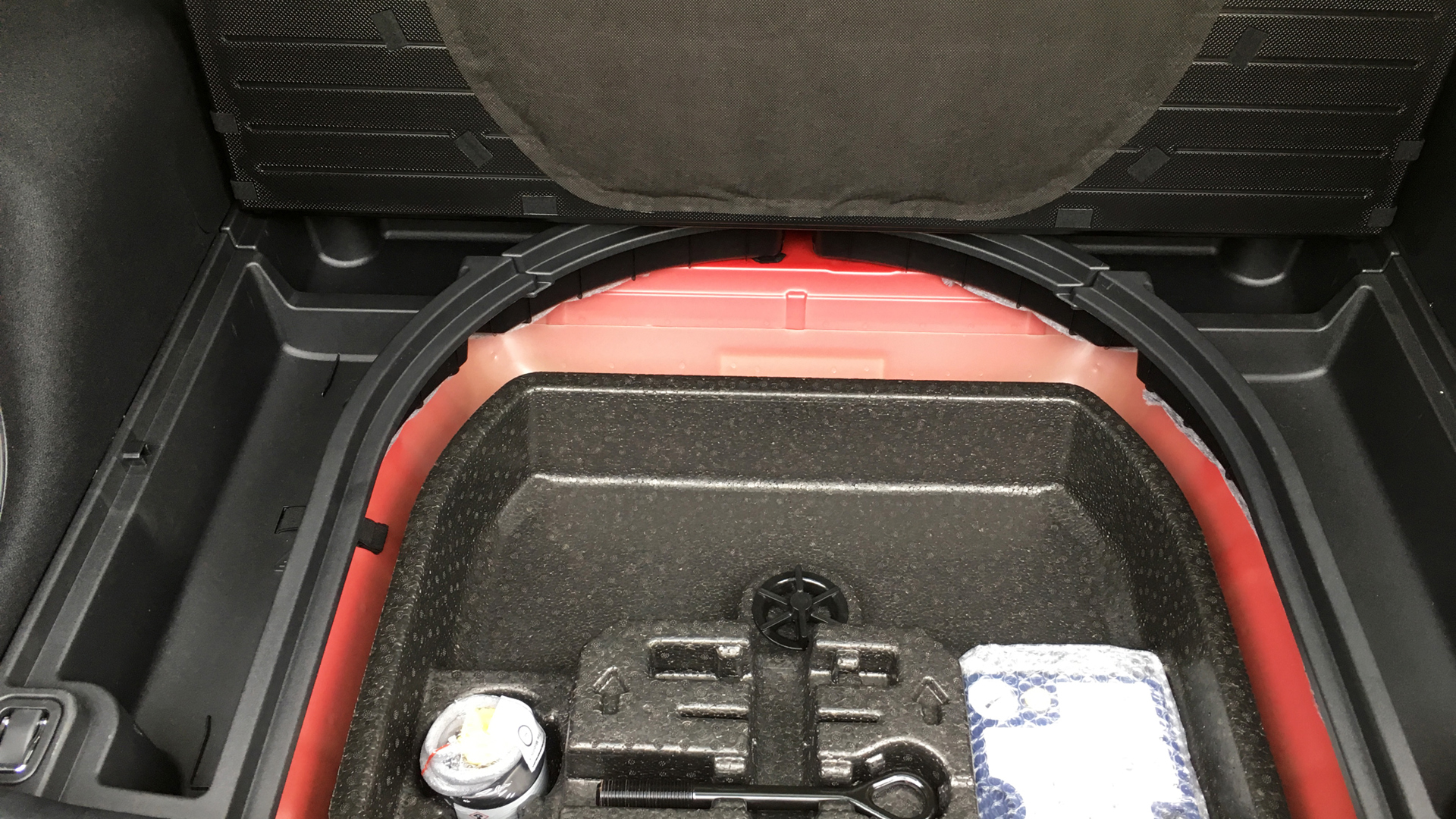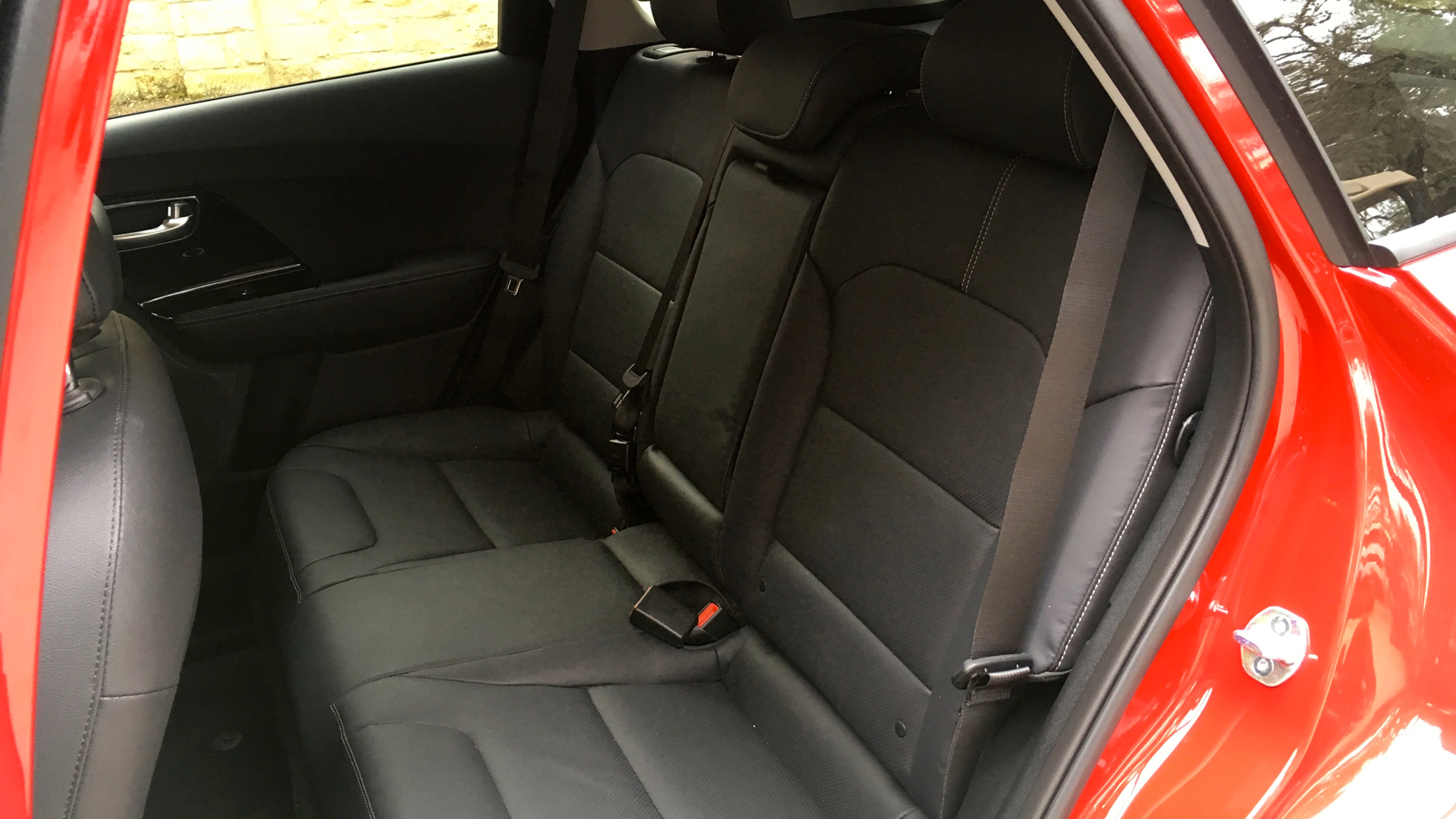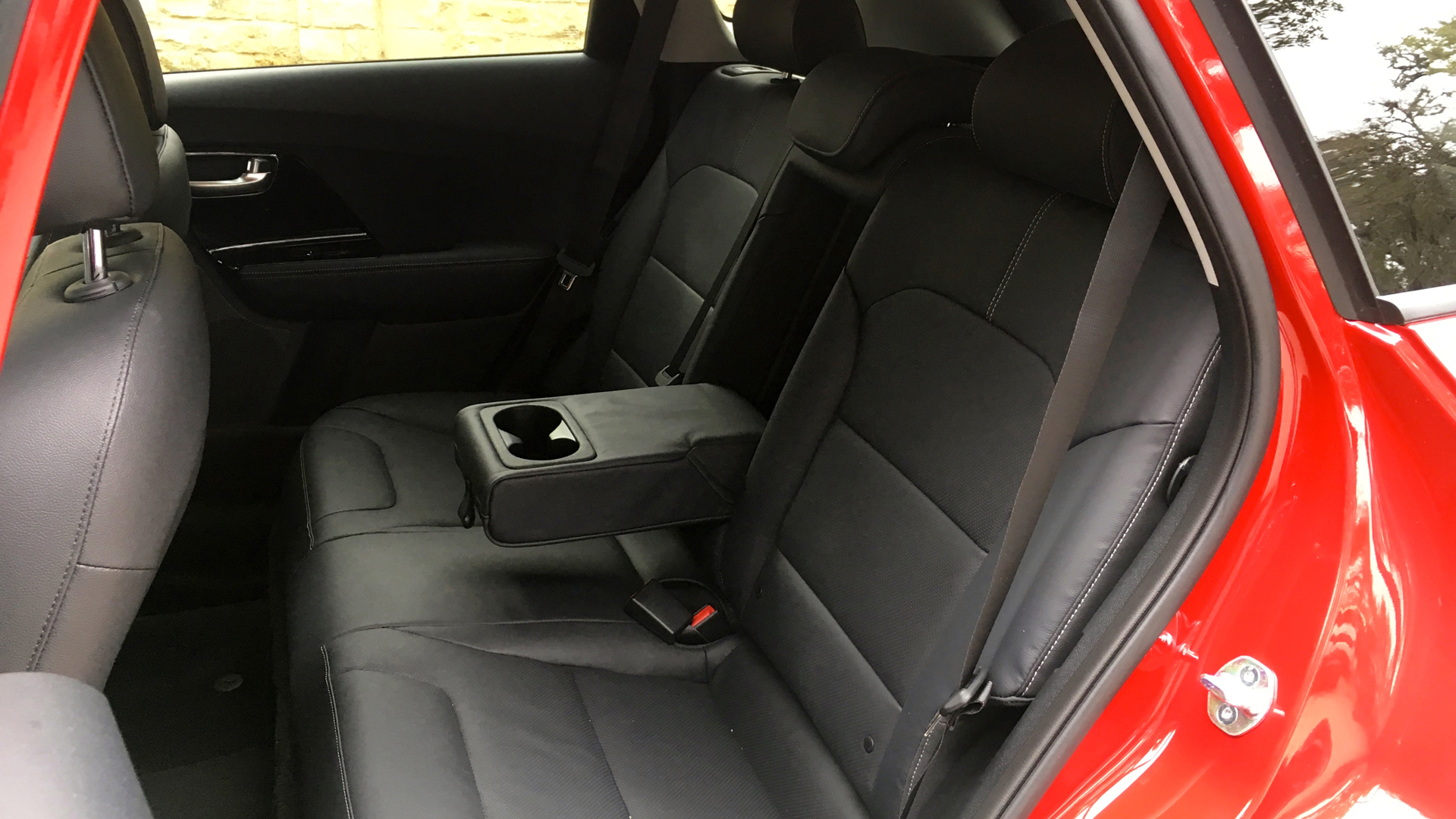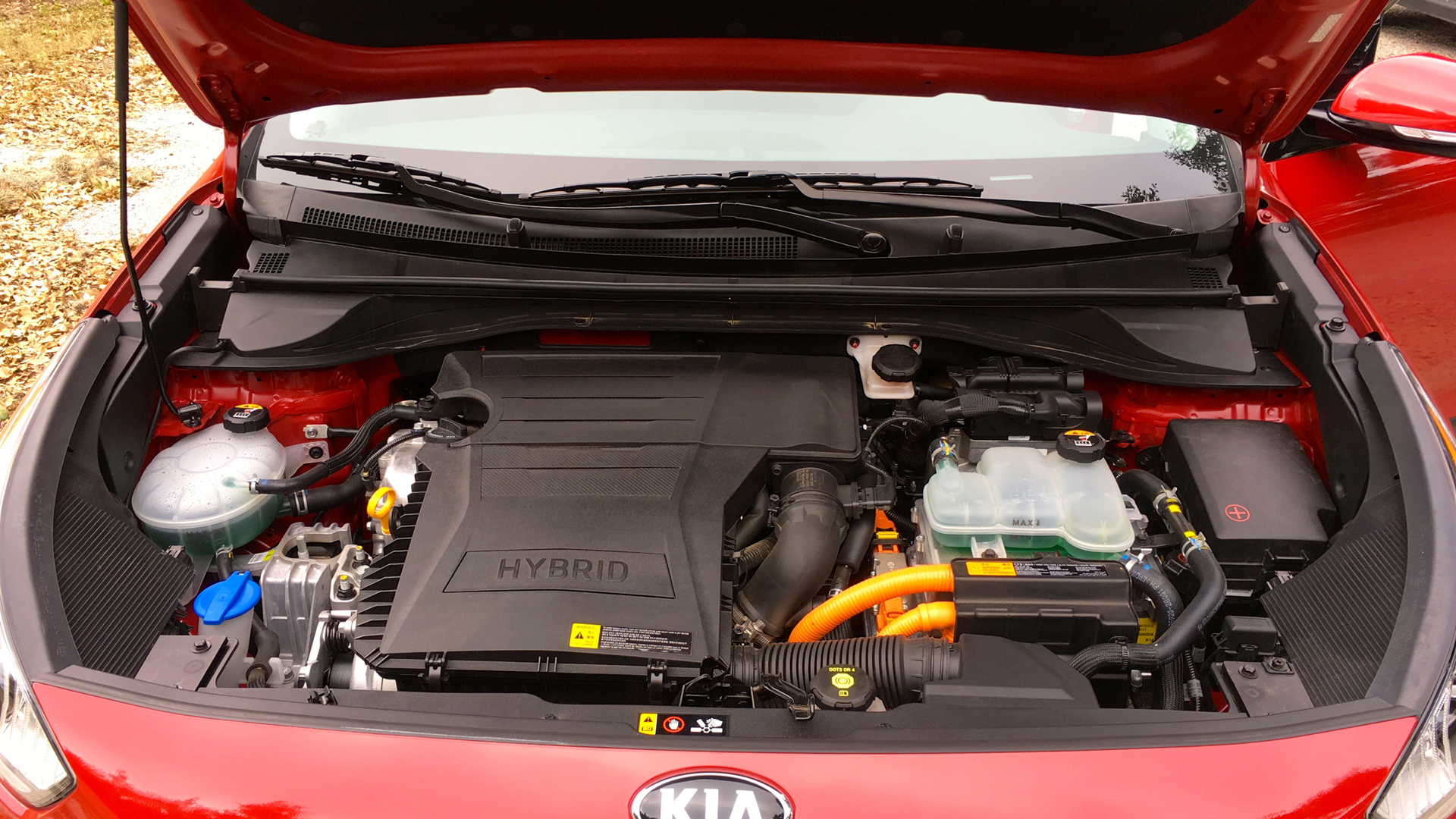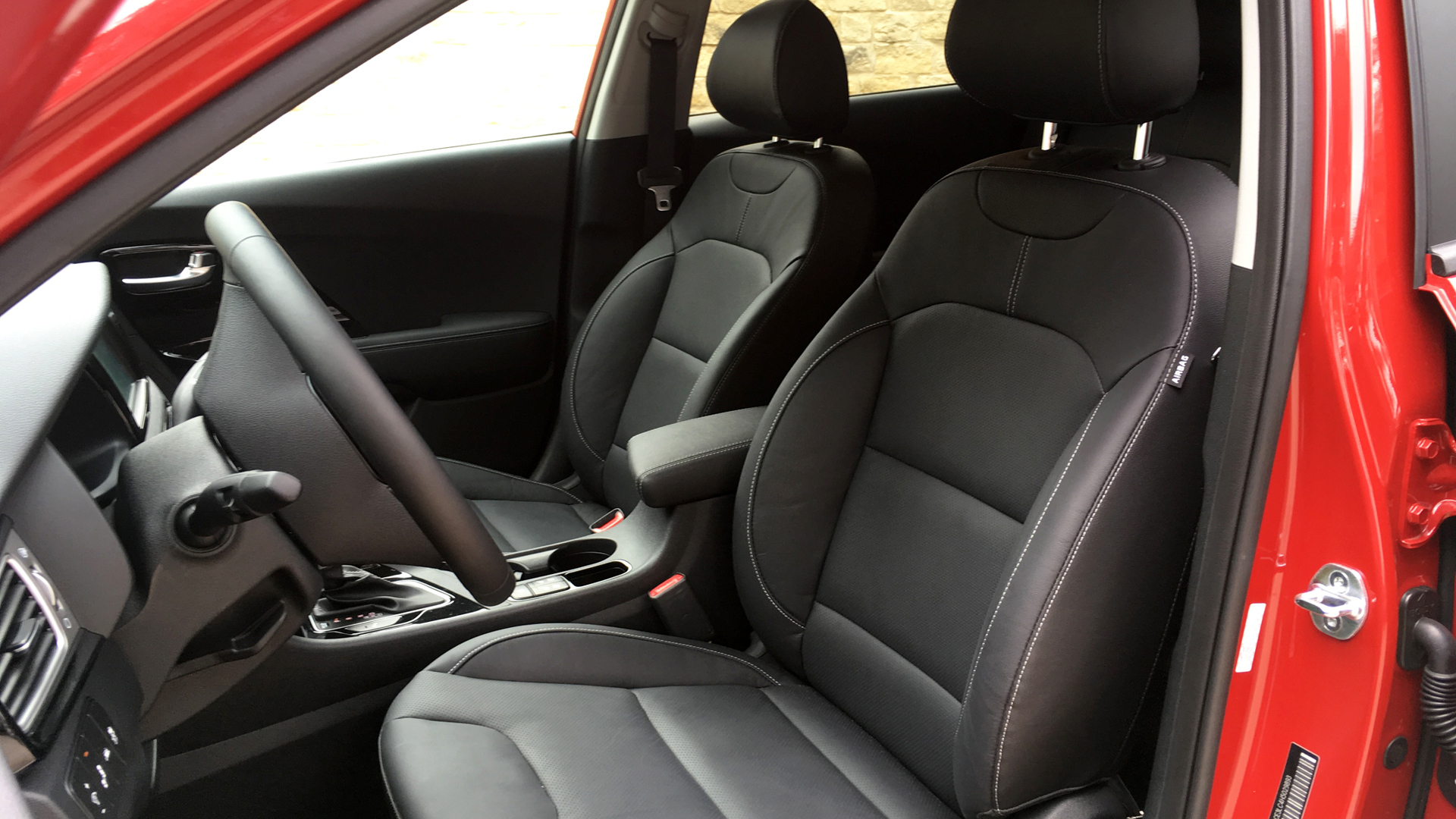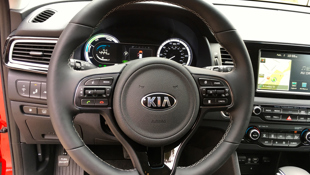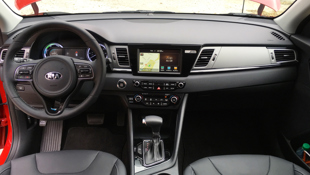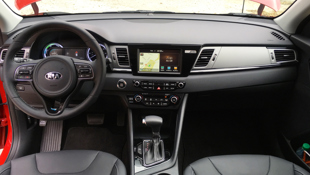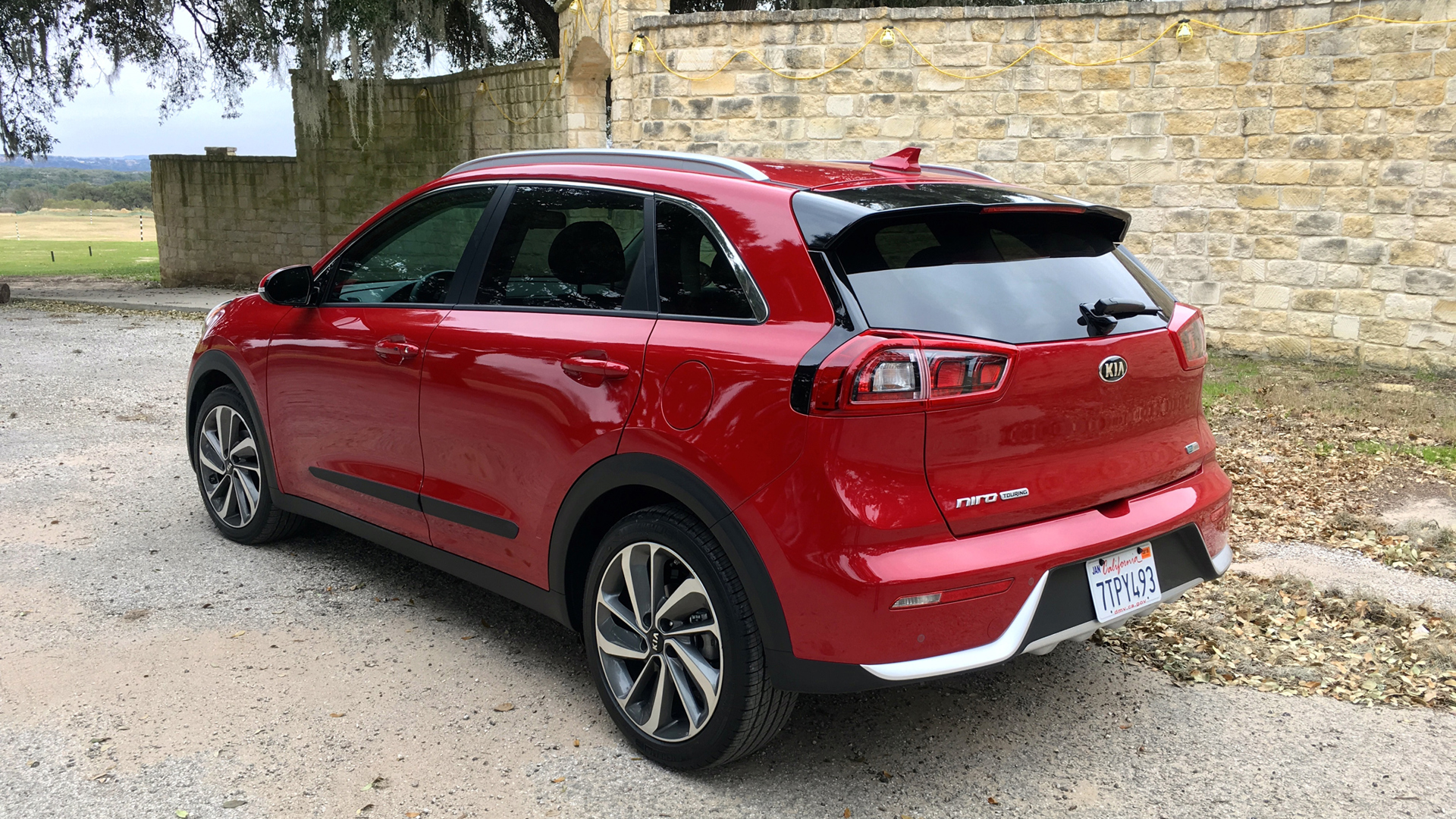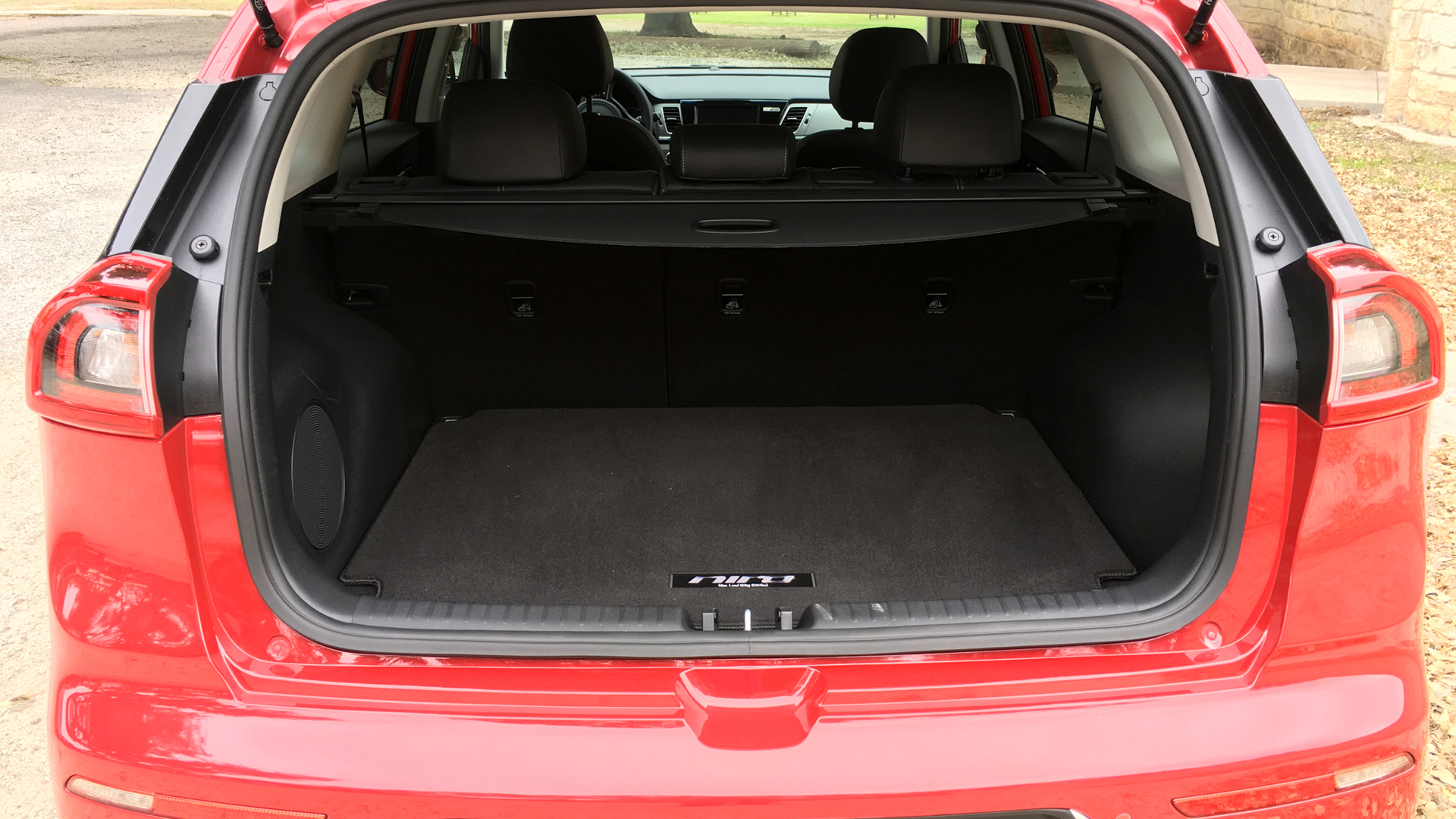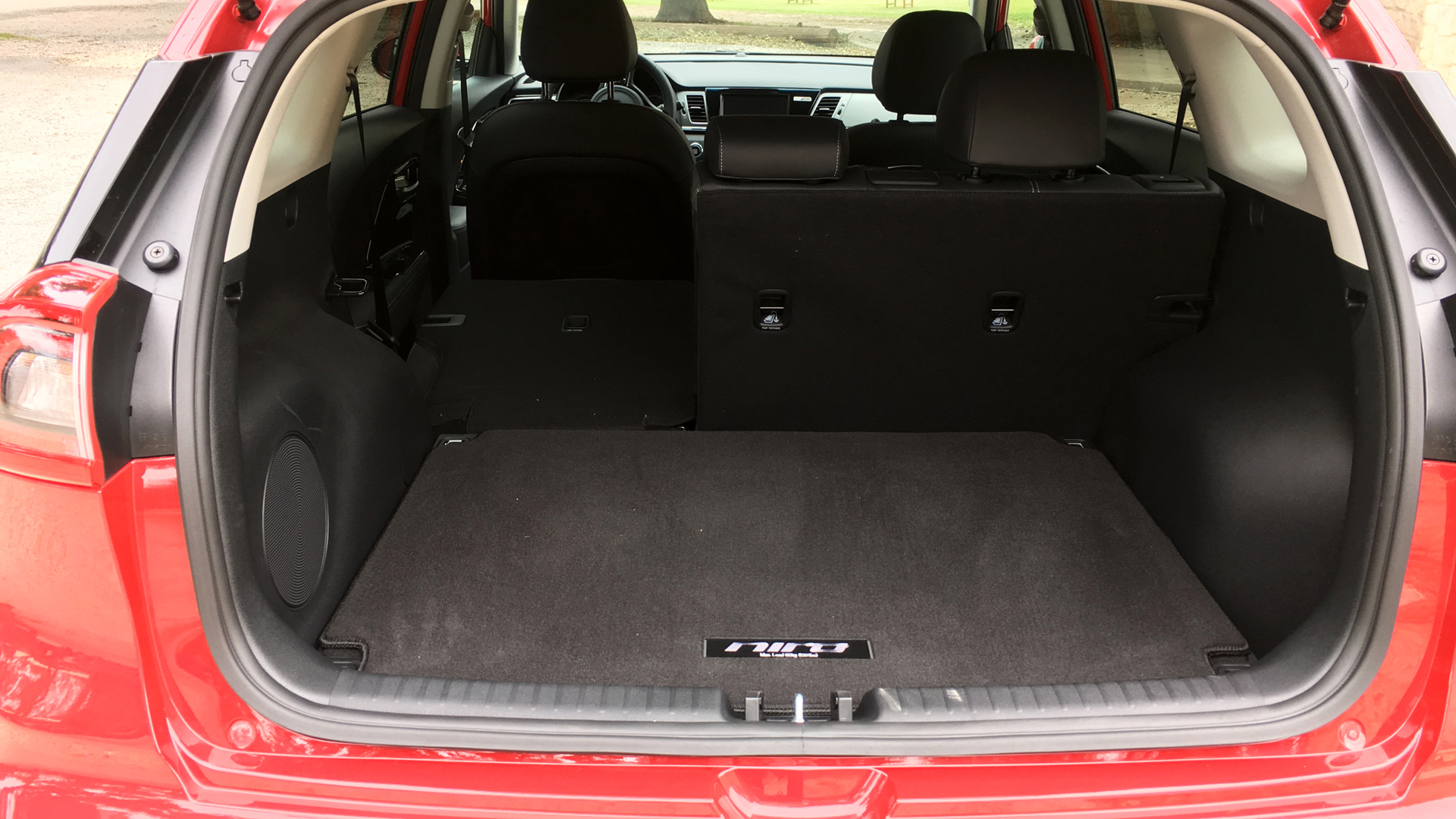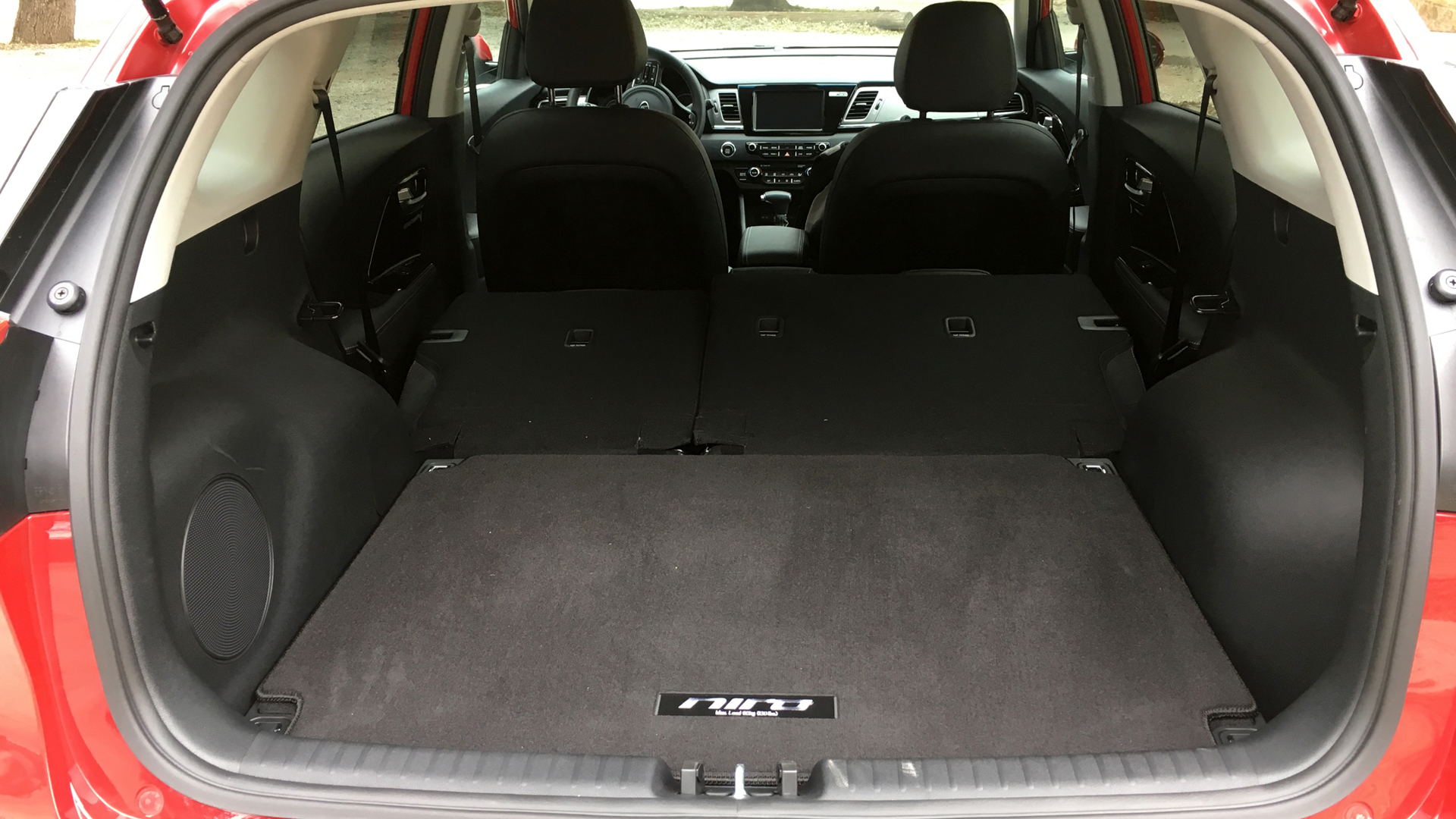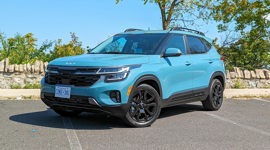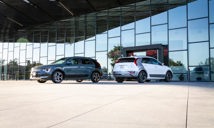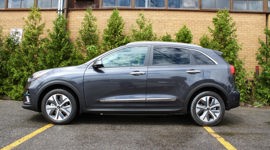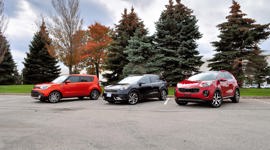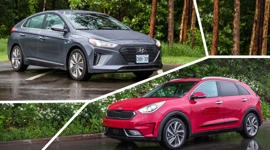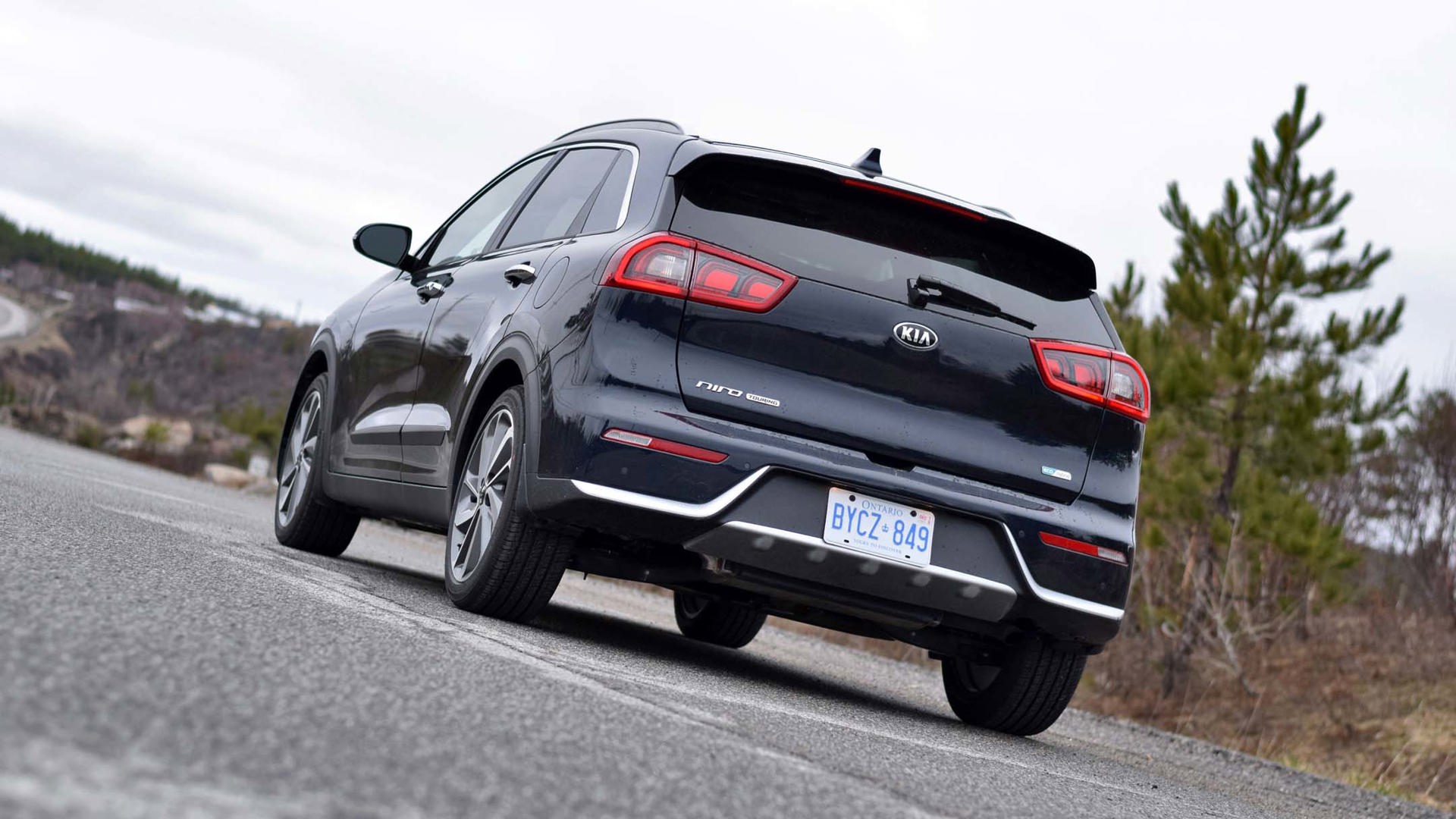San Antonio, TX – You thought you didn’t need another compact crossover utility vehicle (CUV) – even a hybrid one – but maybe you were wrong. Designed from the ground up as hybrid, the 2017 Kia Niro is both familiar and unlike anything else that’s been done. The name comes from the jamming of near and zero, as in ecological damage (not from the Emperor that played the fiddle while Rome burned, a decidedly non-ecological output).
So who is Kia selling this to?
Starting at $24,995 for the base Niro L in Canada, the price for our fine-looking and loaded Touring tester was not yet available. Intentionally unadorned, functionally practical, its styling takes cues from the Mies Van der Rohe design school: less is more – function dictates form – but with a slight pugnacious bent. If I weren’t over 50, I’d use the word “cool”. An integrated front spoiler and air curtain bumper contribute to overall aerodynamics, pure function, while adding touches of flair. The integrated active air flap promotes flow under the Niro while cooling the engine.
Considering its .29 drag coefficient, the Niro sits quite high and is easy to get in and out of, compared to its sister Kia Sportage, which has a .33 drag coefficient. Echoing that simple design ethic, the bi-functional headlights project the low and high beams from a single source. In back, a rear spoiler with an embedded rear light caps off the effect. Below, a diffuser looks cool enough but promotes suck-to-the-ground.
Inside, the Niro perpetuates the aforementioned simplicity. Simplicity shouldn’t be confused with cheap but rather clean and unadorned. Yet it still packs in plenty of the sorts of indulgent conveniences we’ve come to expect of Kia, including a tilt and telescopic steering wheel that’s heated and leather-wrapped, rearview camera (somebody pass a law already), USB charger and so on. The front seats are both heated and ventilated, though slightly squishy. After several hours in the car, my back was grumpy.
A longish wheelbase provides generous room in the rear seats, considering the category. Indeed, there’s good headroom and legroom for all and still heaps of cargo space. In 60/40 configuration, those rear seats fold almost completely flat, taking the capacity from 635 litres to 1,789 (which admittedly curtails those riders’ legroom and headroom).
Back to ground-up design: Part of the reason for all that room comes the placement of the battery under the rear seat. When you’re designing from scratch and not Frankensteining an existing model into hybridity, you can find such clever solutions. Consider how Tesla makes the battery part of the chassis. It disperses the weight, saves space and anchors the vehicle. Gosh, if only either could have dinner on the table by six, you’d be done searching.
Let’s talk hybridity of systems. An Atkinson-cycle 1.6-litre direct-injected four-cylinder engine, which achieves 104 hp, is paired with a 1.56 kWh lithium-ion polymer battery-powered hybrid system that, in turn, produces 139 hp and 195 lb-ft of torque. Does that sound kinda soft? It ain’t. I haven’t been given the Niro’s curb weight, but much of the body is composed of high-strength (aka light) steel. Furthermore, the hood, tailgate, suspension and brake calipers are composed of aluminum to shave more pounds. They’ve built it as light as possible without compromising safety. Meanwhile, the torque delivery in electric mode moves at the speed of thought. Yay! It’s a matter of physics, not an invention by Kia, but welcome nevertheless.
The Niro’s computer can detect elevation. At first, we were like: so, neat graphics on the maps? Yes but no. It uses that information to improve efficiency. So before a hill, it charges the battery to retain the electric equivalent of fuel to maximize its climbing abilities. Conversely, before heading down a hill, it alerts the regenerative brakes. The system even predicts “possible coasting distance”.
All together, the result is some truly impressive fuel economy: 5.1 L/100km on the highway, 5.8 in the city and 5.4 combined for the top Touring trim we drove.
So who is Kia selling this to? This launch is taking place in a country where the current administration thinks reasons for fuel efficiency are fanciful hogwash. Our hosts were cagey with their answers. Like any marketer they probably want everybody to buy their product. However the room was well-packed not just with automotive journalists, there was a big minority of lifestyle and mommy-bloggers, which is telling enough on its own.
On the safety front, seven airbags are positioned throughout. A “virtual engine sound system” is designed to solve the silence problem that electric mode creates. Translation: People don’t know there’s a car coming up on them. It was still pretty quiet though and, in the parking lot, was no match for a busy blogging mommy in mid-reportage while devouring a Danish. Fortunately there’s brake-force assist, an interventionist feature that automatically stops the vehicle when the computer detects an obstruction.
The looping roads on the deserted hills and canyons outside of San Antonio, Texas, provide a dramatic backdrop and exciting “track” to test the newly introduced Niro. The vehicle stability management and electronic stability control work well, as the steep and curvy Texan roads proved. The lane-departure warning system and blind-spot alert are fully effective. Considering how relatively empty the roads are on the outskirts of San Antonio, the local drivers of domestic pickups did not welcome Korean hybrids bearing California plates into their lanes.
The “smart” cruise control lets you program the distance you’ll maintain from the driver in front of you without having to brake yourself. It’s hardly new, but is not common yet among lower-priced vehicles.
Hill-start control exists to prevent rolling when the system senses an incline. While waiting in line to park for the launch event’s lunch break, my drive partner and I were on such an incline, a steep one. The Niro was in electric mode and, as an experiment, I applied no brake. We did roll back a couple of feet till it held. It works!
Maybe you’ve noticed that we’ve surreptitiously moved from talking about the Niro to operating it. It’s that smooth. Together with the acoustic windshield, the sound-baffling materials are well-placed. In fact, I accidentally left it “running” during lunch. The software is designed for such idiocy and will cut the power before the battery drains. So the ride in the Niro is exceptionally quiet.
Shh! I think we’re about to go on the road.
To say that the Niro is fun to drive would not be an exaggeration, just a lie. But it is occasionally surprising – and absolutely serviceable if you want a safe CUV with goodly space to cart your stuff around and absolutely killer mileage. It actually handles well considering it’s a CUV. If you’re testing it, definitely switch into Sport mode and drive there in automatic or by up- and down-shifting between the six gears – it improves the experience, even if it does sour the fuel efficiency slightly.
It’s a pretty good driving experience. Considering you’re sitting at soccer mom–approved height, the Niro feels anchored, not at all tippy. The long wheelbase has the added benefit of providing a low centre of gravity. The steering is good, genuine feeling.
The visibility is excellent. Nonetheless the blind spot warning is sensitized to the level of a nervous squirrel. It was like driving an ’80s pinball machine with the noises and lights going off every time we merged.
The eco driver’s assistance system coaches you to more efficient driving, to milk better numbers out of the fuel economy. It’s the classic hybrid driver’s game. A hybrid system gauge indicates how fuel-efficient your driving is. When the dial is in Charge, you’re a good citizen, converting energy from your drive into power. Eco means you’re driving consciously. Power means you’re in danger of having fun. A state-of-charge gauge indicates how much power you have left in your battery, like the bar chart you see for your gas tank.
The nav system works well though I inadvertently found a flaw as is my wont on drive events. That is, we got lost twice, though we never got to that Texan cliché of buzzards circling cacti. The first time, the nav brought us easily back to the planned driver route. (These launch events are orchestrated to the penny.)
However the nav doesn’t update itself well. The second time we were lost was back in San Antonio at the tail end of the drive. After visiting the Alamo, a must (“To miss th’Alamo, would be like us Texns comin’ way up there to Terrantoe and not visiting your famous CNN tower!” someone told us) the drive route’s directions screwed us up and we were suddenly in a deserted neighbourhood of empty retail spaces. Picture Badger’s favourite corner for dealing in Breaking Bad. We typed in the hotel address, ground zero in a booming reclaimed hipster-chic steam-punk historical industrial complex. We got back on track right enough but the system was unaware of the ubiquitous construction surrounding the complex. “Turn right, stupid!” it didn’t quite say. But the many roads were closed. Two possible alternate routes were barred by construction as well but the system didn’t know. It was frustrating and hilarious because we could see the hotel but currently there’s only one access point unless you a helicopter. We found it and arrived safely.
All’s well that ended quietly.
